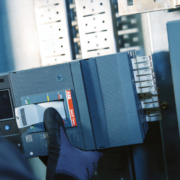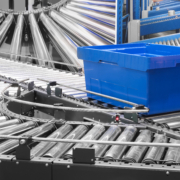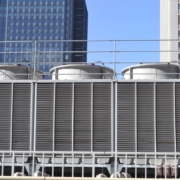Safety by design in 3 easy steps
Industrial accidents involving electricity and electrified equipment are one of the leading causes of lost hours and employee fatalities. By choosing the right electrical components, panelboard OEMs can help customers promote workplace safety.
Electrical safety is a significant concern for industrial employers. Electrical accidents, including those caused by arc faults, direct exposure to electricity, and other electric-related incidents, can lead to lost work hours, factory downtime, and fatalities. In fact, according to the Occupational Safety and Health Administration (OSHA), there were 1,322 workplace fatalities involving electricity between 2011 and 2022. The majority (70%) of these fatalities occurred in non-electrically related occupations, with nearly half (48%) directly caused by working on or near energized wires or parts.[i]
Panelboard OEMs can help their customers promote workplace safety by designing systems that protect property and people from the risks of arc flash and the dangers of working on or around conductive systems. In this article, we examine three steps for designing safety into every panelboard system produced.
Step one: Choose the right components
There’s an old saying: If you want the job done right, choose the right tools. Electrical components are no exception to that time-tested rule. Here are several parameters to consider when choosing components.
Electrical ratings: There is no such thing as a one- size-fits-all panelboard. These linchpins of industrial electrical systems must be able to withstand the power demands of the systems they support. That means choosing components with the correct electrical ratings. Here are three to consider:
- Short-Circuit Current Ratings (SCCR) help prevent potential damage during fault conditions by indicating the highest level of short-circuit current a component can safely withstand.
- Voltage and current ratings help avoid overheating, insulation breakdown, or other electrical failures.
- Temperature ratings determine the environmental conditions a component can operate in without degrading performance or safety.
Environmental ratings: Panelboards deployed in outdoor or high-humidity environments need to be able to withstand moisture and air particulates. Both the National Electrical Manufacturers Association (NEMA) and the International Electrotechnical Commission (IEC) publish widely used standards for electrical enclosures based on their ability to withstand liquid and airborne particulates.
As an added advantage, NEMA and IEC ratings can help prevent accidents, such as accidental touching of a wire (finger or tool), when working around conductive systems and equipment.
Adjustable Settings: Some electrical components offer adjustable settings for more precise control and improved safety. For example, the Ekip Touch electronic trip units on ABB’s SACE® Tmax® XT and Emax 2 circuit breakers allow for precise calibration to the electrical system’s requirements.
Arc Detection: Some components, like ABB’s ARC Guard TVOC-2 and Emax 2 circuit breakers, use advanced arc detection system with optical sensors that can detect the light from an arc flash and send a tripping signal to the breaker in less than one millisecond. This reduces the total arc fault clearing time to less than 50 milliseconds. This rapid response greatly enhances safety by minimizing the energy released from an arc fault, protecting both personnel and equipment from potential damage.
Step two: Leverage plug and play designs
Plug and play designs, like those used by many of ABB’s panelboard systems (ReliaGear® neXT, SMISSLINE TP, and ProLine UL 67) make assembling and switching out components easy. This plug in design also allows you to choose compatible IP20 rated components like Tmax XT with the IP20 lug barriers and lug in line side connectors for a “touch-proof” design. A field-reversible bus stack, which can be flipped 180 degrees to accommodate top or bottom feeds without extra parts, further improves safety by reducing potential errors and minimizing the time it takes to install the system.
Step three: Add an app
Maintaining a safe distance is always a best practice when working on or around conductive systems and equipment. Unfortunately, that’s not always possible. Equipment and systems need periodic maintenance. Luckily, many of today’s advanced panelboard components come with wireless connectivity, such as Bluetooth®, that allows them to connect to apps that allow commissioning and monitoring from a safe distance. Applications like ABB’s EPiC mobile app have been shown to dramatically cut installation time, thereby enhancing efficiency and reducing the amount of time personnel are exposed to electrical hazards.
Safety is not optional
Workplace safety has improved dramatically over the years thanks to the efforts of socially responsible employers and the support of organizations like OSHA. These days, it’s not uncommon for increasingly safety-conscious job seekers to ask about workplace safety when considering future employment opportunities. At ABB, we’re committed to putting safety first by designing advanced safety features into all our products. Learn more about that commitment by visiting https://new.abb.com/safety.
[i] 2011-2022 Workplace Fatalities & Injuries, Electrical Safety Foundation, esfi.org
See related blog post “Enhanced circuit protection: An evolution in safety, efficiency, and reliability”
—
Mike Dutoit
Product Marketing Manager
Jeremy Abdo
Product Marketing Manager












